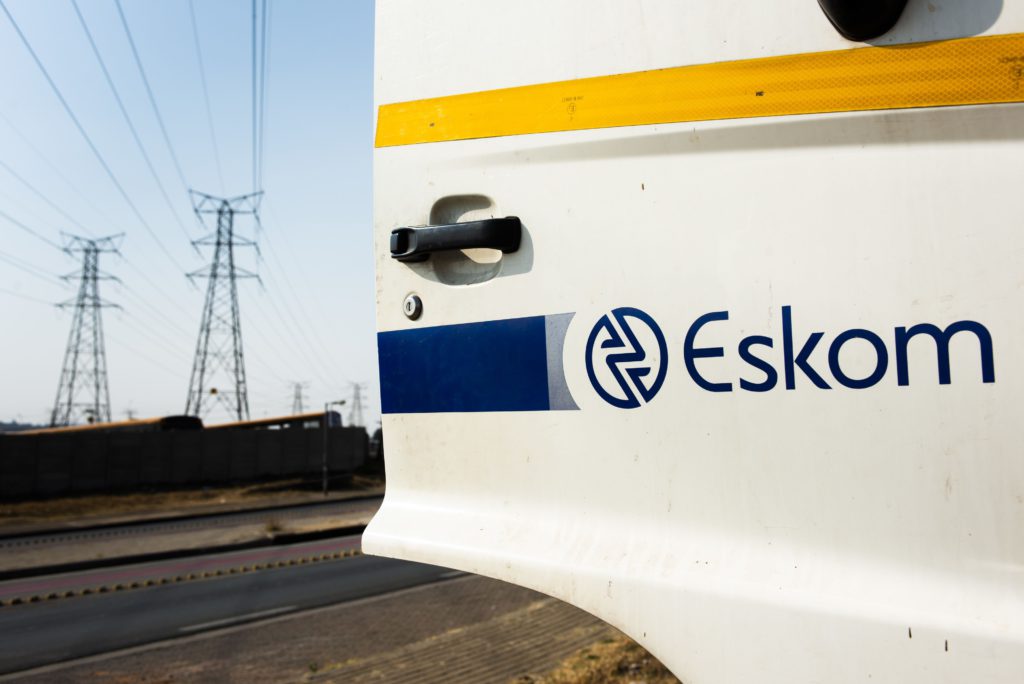South Africa’s stricken power utility will receive 254 billion rand ($13.9 billion) in debt relief from the government over the next three years, provided it brings in private partners to help operate its plants and the electricity transmission network.
(Bloomberg) — South Africa’s stricken power utility will receive 254 billion rand ($13.9 billion) in debt relief from the government over the next three years, provided it brings in private partners to help operate its plants and the electricity transmission network.
The package will strengthen Eskom Holdings SOC Ltd.’s balance sheet and cover all interest payments over the next three years, budget documents presented by Finance Minister Enoch Godongwana to lawmakers in Cape Town on Wednesday show. That will free up money for the utility to undertake plant maintenance and improve the transmission and distribution infrastructure as the country battles record electricity outages.
Eskom “imposes an enormous drain on the economy,” the National Treasury said in its Budget Review. “Prolonged and debilitating power failures” are among the factors that prompted it to cut its economic growth forecast for 2023 to 0.9% from 1.4% in October.
The rand gained as much as 0.7% and was 0.2% stronger at 18.2118 per dollar by 3:19 p.m. in Johannesburg, while the yield on South Africa’s most liquid government debt due in 2026 dropped. The yield on Eskom’s unguaranteed tranche of dollar notes maturing in 2028 fell 45 basis points to 9.49%.
“The 2023 budget reiterates government’s commitment to debt stabilization and a primary surplus,” said Elna Moolman, an economist at Standard Bank Group Ltd. “Investors will draw some comfort from the continuity of the general fiscal intent, and more clarity about the fiscal impact of support for Eskom.”
The relief adds to 263.4 billion rand in bailouts handed to Eskom since 2008, when it started imposing rolling blackouts that have roiled the economy. The Treasury said the success of the plan hinges on the implementation of politically unpopular, inflation-beating electricity-tariff increases approved by the nation’s energy regulator last month.
President Cyril Ramaphosa, who is expected to lead the ruling African National Congress in its toughest election battle since the end of apartheid next year, has appealed to Eskom to suspend the tariff hikes of as much as 18.7%. Opinion polls show the party risks losing its national majority.
The government will give Eskom three annual advances totaling 184 billion rand through March 2026 to repay maturing debt and cover interest costs. The funding will be converted to equity if Eskom meets its performance criteria. The bulk of the transfers will be financed through additional borrowing, the Treasury said.
The government hadn’t yet discussed details of the debt-relief plan with Eskom’s creditors before the announcement, though the package was shaped by feedback from engagements with them, said Duncan Pieterse, the head of the Treasury’s asset and liability management unit. An investor call is scheduled to take place later on Wednesday afternoon.
While the relief will give the loss-making utility room to undertake critical maintenance needed to secure electricity supplies, it will weigh on public finances.
Government debt will probably peak at 73.6% of GDP in 2026 — a higher level and three years later than previously expected. Debt-service costs — the fastest growing expenditure line item for about a decade — will increase to almost 20% of main-budget revenue. That’s even as the government uses higher-than-expected tax revenue to pay down debt and rein in the budget deficit.
Debt relief for Eskom is contingent on the company meeting pre-determined performance targets. An international consortium of energy experts will review its fleet of coal-powered plants by mid-year, determine which ones can be “resuscitated” to original equipment-manufacturer’s standards and advise on operational efficiencies. Eskom will then be obliged to implement the recommendations, and to concession operations and plant maintenance to private operators.
While the utility will be given a window to boost compliance, it will be expected to meet all the conditions, said Jeffrey Quvane, the director for energy and telecommunications in the Treasury’s asset and liability management unit. Eskom’s performance will be reviewed on a quarterly basis and it will have to repay loans at market rates to the National Revenue Fund if it fails to meet targets.
Eskom, the Treasury and Department of Public Enterprises also agreed to design a mechanism for building new transmission infrastructure “that will allow for extensive private-sector participation,” the Treasury said. The Department of Mineral Resources and Energy, which the ANC wants to take over responsibility for Eskom, was consulted as part of the debt-relief arrangement process, said Ravesh Rajlal , the chief director for oversight in the Treasury’s asset and liability management unit.
Under the plan, Eskom may only undertake capital expenditure on transmission and distribution, while any spending on generation will have to relate to meeting minimum emission standards. The utility will also be barred from awarding unsustainable salary increases, and taking on new borrowings from April until the end of the debt-relief period without written permission from the finance minister.
Eskom’s debt burden stands at 423 billion rand, almost 80% of which is guaranteed by the government. The guarantee framework expires at the end of next month, after which the company will no longer be able to draw down on guarantees.
–With assistance from Mike Cohen.
(Updates with market reaction in fourth paragraph.)
More stories like this are available on bloomberg.com
©2023 Bloomberg L.P.










